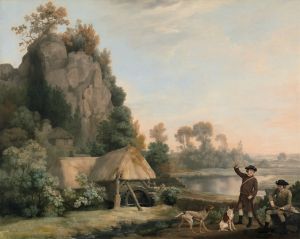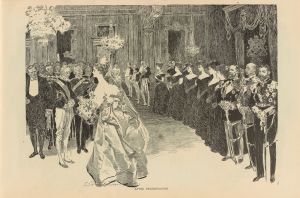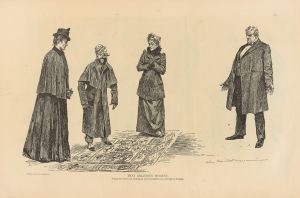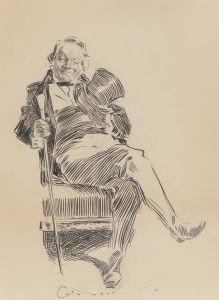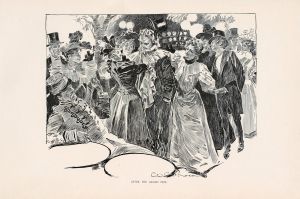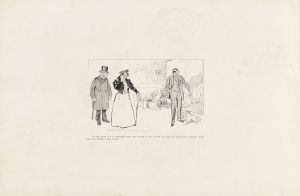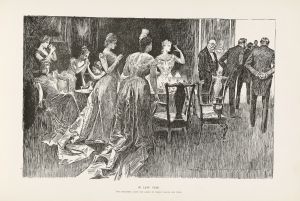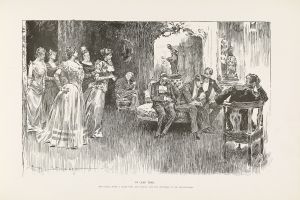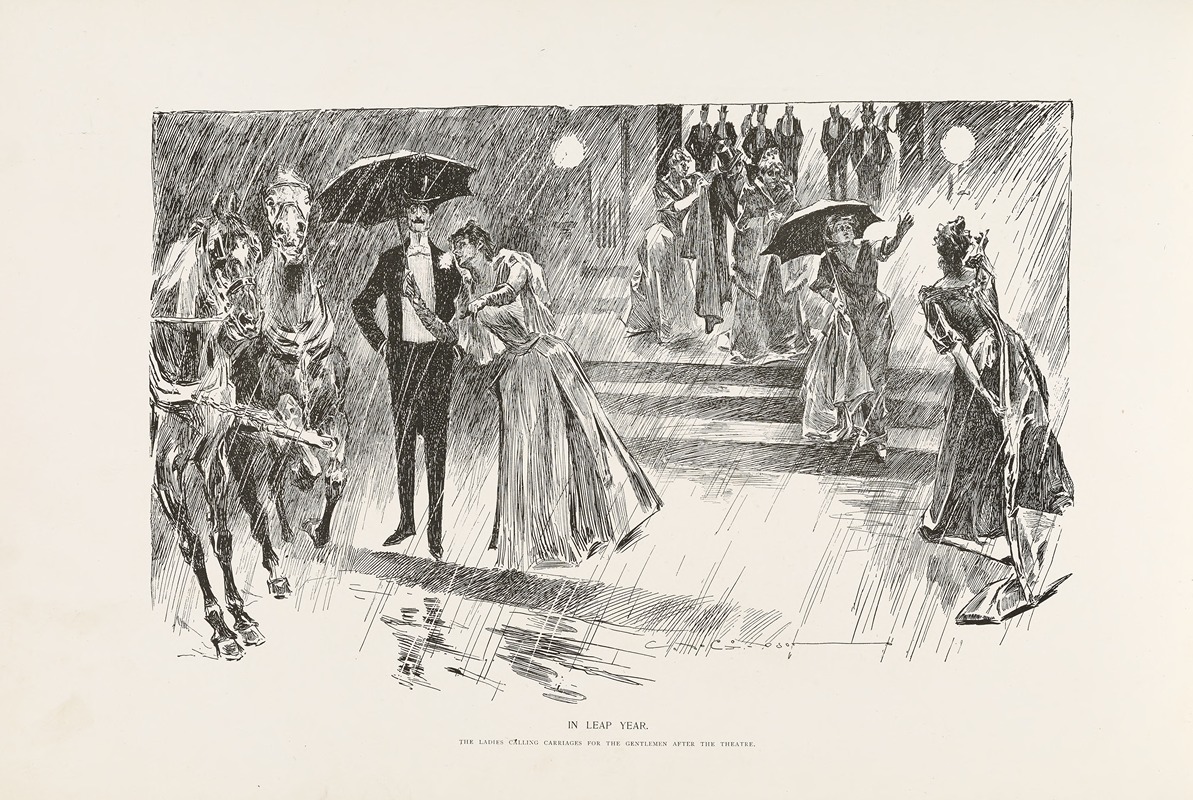
In leap year – The ladies calling carriages for the gentlemen after the theatre
A hand-painted replica of Charles Dana Gibson’s masterpiece In leap year – The ladies calling carriages for the gentlemen after the theatre, meticulously crafted by professional artists to capture the true essence of the original. Each piece is created with museum-quality canvas and rare mineral pigments, carefully painted by experienced artists with delicate brushstrokes and rich, layered colors to perfectly recreate the texture of the original artwork. Unlike machine-printed reproductions, this hand-painted version brings the painting to life, infused with the artist’s emotions and skill in every stroke. Whether for personal collection or home decoration, it instantly elevates the artistic atmosphere of any space.
Charles Dana Gibson was a prominent American illustrator, best known for his creation of the "Gibson Girl," an iconic representation of the American woman at the turn of the 20th century. His illustrations were widely published in magazines such as Life, Harper's Weekly, and Scribner's, and they played a significant role in shaping the visual culture of the era.
One of Gibson's notable works is "In Leap Year – The Ladies Calling Carriages for the Gentlemen After the Theatre." This illustration is part of a series that humorously depicts the social customs and gender roles of the time. The concept of a "leap year" traditionally allowed women to take on roles typically reserved for men, such as proposing marriage. Gibson's illustration captures this reversal of roles in a theatrical and humorous manner.
The artwork portrays a scene outside a theatre, where elegantly dressed women are seen calling carriages for their male companions. This role reversal is a playful commentary on the societal norms of the period, highlighting the constraints and expectations placed on both genders. The women in the illustration are depicted with the characteristic poise and confidence of the "Gibson Girl," embodying both beauty and independence.
Gibson's work often reflected the changing attitudes towards gender roles during the late 19th and early 20th centuries. The "Gibson Girl" became a symbol of the new, more liberated woman, who was active, educated, and socially engaged. Through his illustrations, Gibson contributed to the dialogue about women's rights and their evolving place in society.
"In Leap Year – The Ladies Calling Carriages for the Gentlemen After the Theatre" is a fine example of Gibson's ability to blend humor with social commentary. The illustration not only entertains but also invites viewers to reflect on the arbitrary nature of gender roles and the potential for change. By placing women in a position of control, even if only temporarily, Gibson challenges the status quo and encourages a re-examination of traditional customs.
Gibson's illustrations were widely celebrated for their technical skill and keen observation of contemporary life. His ability to capture the essence of an era with wit and elegance made him one of the most influential illustrators of his time. The "Gibson Girl" and the scenarios he depicted continue to be studied as important cultural artifacts that offer insight into the social dynamics of the early 20th century.
Overall, "In Leap Year – The Ladies Calling Carriages for the Gentlemen After the Theatre" is a testament to Charles Dana Gibson's talent as an illustrator and his contribution to the cultural discourse on gender roles. Through his art, Gibson not only entertained but also provoked thought and discussion, leaving a lasting impact on American visual culture.






